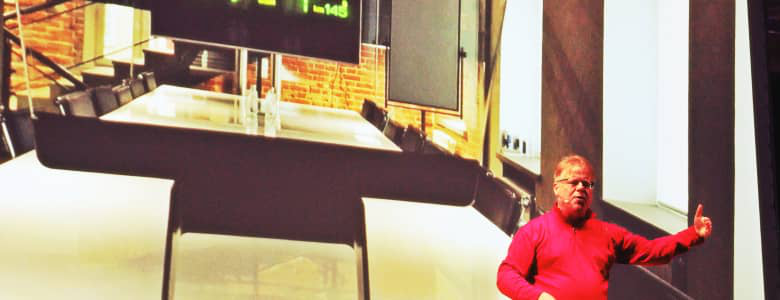Virtually augmented for real

A virtual history lessons: In the early, heady days of computer science, punch cards and mainframe computers were seen as breakthroughs.
Since then, computing has gone mainstream, progressing from DOS command lines to graphical user interfaces and desktops, and now to mobile devices.
But now, the tech industry might just be hatching its greatest breakthrough to date, says tech evangelist Mr Robert Scoble, who co-authored the book The Fourth Transformation: Augmented Reality and Artificial Intelligence with writer and social media expert Mr Shel Israel.
Mr Scoble predicts the latest transformation — augmented reality (AR) coupled with artificial intelligence (AI) — will cause more upheaval than any previous technology.
“Everything will change with the emergence of AR,” he said. Walking the talk, he donned the latest HoloLens — a pair of holographic AR glasses developed by Microsoft — for his stage appearance at Convergence on 18 September 2017.
The conference, which focused on emerging technologies, was held at the Marina Bay Sands Expo and Convention Centre as part of the Singapore Week of Innovation and Technology (SWITCH).
Virtually across industries
AR isn’t just used in fancy games; in fact, the technology is already finding applications across diverse industries.
In architecture and construction, for instance, AR (and its close cousin virtual reality, VR) has been used to plan and design structures and buildings even before a single brick is laid.
Take theme parks, for example.
“Disneyland in Shanghai was built in VR,” said Mr Scoble. “That is very different to how the first Disneyland [in the US] was built using a physical model.”
After a structure is designed, the building begins — a complex process that requires engineers and mechanics to fix a variety of parts in place using tools and machinery.
By wearing an AR system, workers will be able to more easily identify which parts go where — in a 3D hologram projection, for example, the correct part and its intended location could be highlighted alongside assembly instructions.
This kind of technology will be a boon for industries where attention to detail is essential.
The aerospace sector is a notable example — aircraft manufacturer Boeing is already recording the activity of its mechanics to thoroughly check aircraft assembly down to the last nut and bolt.
AR will soon become a requirement for companies to get faster, safer and more competitive, said Mr Scoble.
Try before you buy
Another industry that is taking advantage of AR is the retail sector — in particular, online shopping. Many brands have adopted the technology to allow customers to trial products before buying them.
IKEA, for example, has developed an AR app that allows customers to visualise how its furniture would fit into their homes. This, it hopes, will overcome the concerns customers have with shopping for such products online.
“I think this is a new lesson for marketers; you now have to worry about the augmented brand and the augmented product, as well as the physical brand and the physical product,” said Mr Scoble.
Beauty company Sephora is doing exactly this for a line of lipstick products. Its app lets customers try out different colours by superimposing different shades onto the lips; all this just requires a simple smartphone with a camera.
Change is on the way even for the humble grocery store: The weekly trip to the shops can be made easy and fast with an AR system that highlights products on the shelf and navigates you to them, said Mr Scoble.
Painless AR
AR also lends itself naturally to medicine and healthcare. Medical schools are already using it to teach anatomy and surgical techniques.
In the clinic, doctors wearing AR-equipped headsets could call up a patient’s medical records during a consultation for a quicker and more effective diagnosis.
Eye-scanning technology could have the added benefit of securing the documents, allowing only the patient’s healthcare providers to gain access, said Mr Scoble.
While AR (and VR) also has some potential medical applications that may sound like science fiction, these are already manifesting in real life.
For example, researchers have used VR games to help ease pain in patients with severe burns.
The immersive experience fools the brain, providing a distraction that relieves pain; in some cases, this therapy turned out to be more effective than opioid drugs like morphine. In the future, your doctor may well prescribe VR rather than painkillers.
“AR is a drug that can hack your brain, and it is quite effective at doing so,” said Mr Scoble.
In addition to physical pain, AR may in the future also be used to treat conditions such as Alzheimer’s disease and dementia, he added.
However, Mr Scoble also sounded a word of caution about the technology, especially in an age where brain hacking is fast becoming a reality.
“This is about to change the meaning of being human… and that will lead to lots of conversations about privacy and ethics.”
https://www.tech.gov.sg/media/technews/virtually-augmented-for-real
